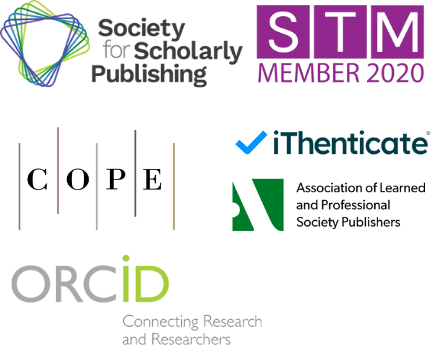The Pedagogical Power of Sesame Street in Fostering Preschoolers' Language Development
DOI:
https://doi.org/10.71222/hfgv9697Keywords:
sesame street, phonological awareness, vocabulary acquisition, educational media, content analysis, early childhood education, language developmentAbstract
This study conducts a qualitative content analysis of the long-standing children's educational program Sesame Street to examine its efficacy as a tool for language development in preschoolers. Focusing on phonological awareness and vocabulary acquisition-two critical predictors of later literacy and academic this research analyzes over 108 minutes of curated episodes and clips to identify and categorize the specific pedagogical strategies employed. The findings reveal that the program utilizes a multifaceted approach, including explicit instruction in rhyming and syllable segmentation, the integration of nursery rhymes and repetitive songs, and direct vocabulary teaching supported by strong multisensory (visual and auditory) cues. Furthermore, the program leverages celebrity appeal and music genres to introduce uncommon vocabulary and concepts like antonyms in an engaging manner. The study concludes that Sesame Street serves as a valuable audiovisual scaffold, providing rich linguistic exposure that may compensate for limited input in some home environments and thus contribute significantly to school readiness. While the program demonstrates potent immediate educational benefits, the discussion also addresses critiques regarding the durability of its effects and its replaceability in the evolving landscape of educational media. This research underscores the potential of well-designed educational programming as a supplemental tool for early childhood language development.
References
1. L. Yang, “The evolution of ballet pedagogy: A study of traditional and contemporary approaches,” Journal of Literature and Arts Research, vol. 2, no. 2, pp. 1–10, 2025, doi: 10.71222/2nw5qw82.
2. G. F. Bautista, P. Ghesquière, and J. Torbeyns, "Stimulating preschoolers' early literacy development using educational technology: A systematic literature review," International Journal of Child-Computer Interaction, vol. 39, p. 100620, 2024.
3. S. L. Calvert, and J. A. Kotler, "Lessons from children's television: The impact of the Children's Television Act on children's learning," Journal of Applied Developmental Psychology, vol. 24, no. 3, pp. 275-335, 2003. doi: 10.1016/s0193-3973(03)00060-1
4. Y. N. Choy, E. Y. H. Lau, and D. Wu, "Digital parenting and its impact on early childhood development: A scoping review," Education and Information Technologies, vol. 29, no. 16, pp. 22147-22187, 2024. doi: 10.1007/s10639-024-12643-w
5. S. Z. Haile, and B. S. Mendisu, "EarlyGrade Reading: The Challenges That Affect Teachers' Practice of Phonological Awareness: The Case of Koorete Language," Education Research International, vol. 2023, no. 1, p. 9527369, 2023.
6. A. F. S. Hidayat, U. Bahruddin, S. Mustofa, E. Duraković, and N. Abidin, "Mapping the application of language learning strategies to the language skills: A content analysis based on Oxford's book," Arabiyat: Journal of Arabic Education and Arabic Studies, vol. 11, no. 2, pp. 277-294, 2024. doi: 10.15408/a.v11i2.43965
7. E. J. Hopkins, and D. S. Weisberg, "The youngest readers' dilemma: A review of children's learning from fictional sources," Developmental Review, vol. 43, pp. 48-70, 2017.
8. M. S. Kearney, and P. B. Levine, "Early childhood education by MOOC: Lessons from Sesame Street (No. w21229)," National Bureau of Economic Research, 2015.
9. M. Killen, K. L. Mulvey, and A. Hitti, "Social exclusion in childhood: A developmental intergroup perspective," Child devel-opment, vol. 84, no. 3, pp. 772-790, 2013.
10. J. M. Ford, "Content analysis: An introduction to its methodology," Personnel psychology, vol. 57, no. 4, p. 1110, 2004.
11. K. Luyckx, H. De Witte, and L. Goossens, "Perceived instability in emerging adulthood: The protective role of identity cap-ital," Journal of Applied Developmental Psychology, vol. 32, no. 3, pp. 137-145, 2011. doi: 10.1016/j.appdev.2011.02.002
12. K. A. Neuendorf, "The content analysis guidebook," sage, 2017. doi: 10.4135/9781071873045
13. M. A. Nippold, "Language development during the adolescent years: Aspects of pragmatics, syntax, and semantics," Topics in language disorders, vol. 20, no. 2, pp. 15-28, 2000.
14. B. M. Phillips, J. Clancy-Menchetti, and C. J. Lonigan, "Successful phonological awareness instruction with preschool chil-dren: Lessons from the classroom," Topics in early childhood special education, vol. 28, no. 1, pp. 3-17, 2008.
15. C. Robbins, and L. C. Ehri, "Reading storybooks to kindergartners helps them learn new vocabulary words," Journal of Ed-ucational psychology, vol. 86, no. 1, p. 54, 1994.
16. J. H. Langer, "Vocabulary and concept development," Journal of Reading, vol. 10, no. 7, pp. 448-456, 1967.
17. K. A. Johnson, "Morphology Via the Social Justice Framework (Master's thesis, California State University, Sacramento)," 2022.
Downloads
Published
Issue
Section
License
Copyright (c) 2025 Junyao Yao (Author)

This work is licensed under a Creative Commons Attribution 4.0 International License.


